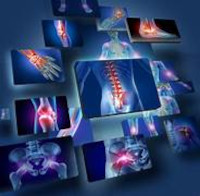Development of Diclofenac and Capsaicin Emulgel for the Management of Inflammation in Rheumatoid Arthritis http://www.doi.org/10.26538/tjnpr/v7i6.28
Main Article Content
Abstract
The topical application of diclofenac for the management of inflammation in rheumatoid arthritis has minimized systemic adverse effect by providing local therapeutic action around the joints. Capsaicin – a naturally occurring compound obtained from plants of the genus Capsicum has antiinflammatory and analgesic property which when combined with diclofenac may lead to enhanced activity. Therefore, a diclofenac-capsaicin emulgel topical formulation was developed and evaluated for its anti-inflammatory activity. Emulgel formulations containing capsaicin, diclofenac, or diclofenac-capsaicin were prepared and subjected to physicochemical characterization, anti-inflammatory activity, skin irritation test and histopathology study in rats. All the formulations had off-white, smooth texture, and glossy appearance. The pH and viscosities of all formulations ranged from 5.51 - 6.23 and 10452 - 52920 mPa.s respectively. All formulations possessed good spreadability and bioadhesive strength, however, the formulations with smaller amount of the alkyl acrylate polymer (1% Carbopol®) as gelling agent had a better spreadability but lesser bioadhesiveness than those with higher gel content (1.5% Carbopol®). The release of diclofenac from all formulations followed the Higuchi model. The diclofenac-capsaicin formulations containing 0.2 and 0.3% capsaicin respectively had a higher anti-inflammatory effect than the diclofenac formulation (p<0.05); the 0.2% formulation had the highest anti-inflammatory effect. The formulations showed no symptoms of allergy nor changes in the microstructure of the skin upon application. The formulations possessed desired physicochemical properties and safety for application to the skin. The spreadability and bioadhesive property of the formulation is dependent on the concentration of carbopol®. The diclofenac-capsaicin emulgel formulation showed improved anti-inflammatory effect when compared with the diclofenac formulation.
Downloads
Article Details

This work is licensed under a Creative Commons Attribution-NonCommercial-NoDerivatives 4.0 International License.
References
Sugimoto MA, Sousa LP, Pinho V, Perretti M, Teixeira MM. Resolution of inflammation: What controls its onset? Front Immunol. 2016; 7(160):1–18.
Fleit HB. Chronic Inflammation. In: McManus LM, Mitchell RN (Eds.). Pathobiology of Human Disease: A Dynamic Encyclopedia of Disease Mechanisms. Amsterdam: StatPearls Publishing; 2014. 300–314p.
Straub RH, Schradin C. Chronic inflammatory systemic diseases. An evolutionary trade-off between acutely beneficial but chronically harmful programs. Evol Med Public Heal. 2016; 2016(1): 37–51.
Bullock J, Rizvi SAA, Saleh AM, Ahmed SS, Do DP, Ansari RA, Ahmed J. Rheumatoid Arthritis: A Brief Overview of the Treatment. Med Princ Pract. 2019; 27(6): 501–507.
Altman R, Bosch B, Brune K, Patrignani P, Young C. Advances in NSAID development: evolution of diclofenac products using pharmaceutical technology. Drugs. 2015; 75(8): 859–877.
Adepoju AO, Ogunkunle TJ, Femi-Adepoju AG. Taxonomic Revision of Nigerian Species of Capsicum L. Based on Some Morphological Characters. Acta Sci Malaysia. 2021; 5(2): 43–46.
Meghvansi MK, Siddiqui S, Khan MH, Gupta VK, Vairale MG, Gogoi HK, Singh L. Naga chilli: a potential source of capsaicinoids with broad-spectrum ethnopharmacologicalapplications. J Ethnopharmacol. 2010; 132(1): 1–14.
Arora V, Campbell JN, Chung MK. Fight fire with fire: Neurobiology of capsaicin-induced analgesia for chronic pain. Pharmacol Ther; 2020; 220: 1–21.
Du Q, Liao Q, Chen C, Yang X, Xie R, Xu J. The Role of Transient Receptor Potential Vanilloid 1 in Common Diseases of the Digestive Tract and the Cardiovascular and Respiratory System. Front Physiol. 2019; 10: 1–17.
DrugBank Online. Capsaicin Mechanism of Action. [Online]. 2023 [cited 2023 May 9]. Available from: https://go.drugbank.com/drugs/DB06774
O’Neill J, Brock C, Olesen AE, Andresen T, Nilsson M, Dickenson AH. Unravelling the mystery of capsaicin: A tool to understand and treat pain. Pharmacol Rev. 2012; 64: 939– 971.
Patel BM, Kuchekar AB, Pawar SR. Emulgel Approach to Formulation Development: A Review. Biosci Biotechnol Res Asia. 2021; 18(3): 459–465.
Sah SK, Badola A, Nayak BK. Emulgel: Magnifying the application of topical drug delivery. Indian J Pharm Biol Res. 2017; 5(01): 25–33.
Ijpa H., Jahan N, Raheemunissa SG, Babu K. Emulgel: A Review. [online]. 2014 [cited 2023 February 22]. Available at https://www.semanticscholar.org/paper/%E2%80%A2- EMULGEL%3A-A-REVIEW-IjpaJahan/4ac8c521f7f7d9c1f13a08105f6f6b2c2c49c380
Khullar R, Kumar D, Seth N, Saini S. Formulation and evaluation of mefenamic acid emulgel for topical delivery. Saudi Pharm J. 2012; 20(1): 63–67.
Velmurugan S, Ali MA. Preparation and evaluation of maraviroc mucoadhesive microspheres for gastro retentive drug delivery. Int J Pharm Pharm Sci. 2015; 7(5): 208–214.
Sarkar V, Chand Yadav K. Formulation and evaluation of prolonged release transdermal drug delivery system of atenolol for the treatment of hypertension. Pharmatutor. 2014; 2(2): 134–140.
Misal B, Koliyote S. Correspondence: Evaluation of AntiInflammatory Activity of Topical Gel by Carrageenan Induced Paw Oedema Method. J Sci Innov Res . 2013; 2(3): 579–584.
Musa AO, Usman HK, Titus I, Olorukooba AB, Aliyu AB, Bello H. Analgesic and anti-inflammatory studies of methanol stem bark extract of Burkea Africana hook (Fabaceae). Trop J Nat Prod Res. 2018; 2(8): 375–379.
Goindi S, Narula M, Kalra A. Microemulsion-Based Topical Hydrogels of Tenoxicam for Treatment of Arthritis. AAPS PharmSciTech. 2016; 17(3): 597–606.
Dibua MUE, Garba DE, Elechenu EC, Emencheta SC, Okeke ES. Assessment of Acute Toxicity, LD50 and Histopathological Evaluation of Nigella sativa and Moringa oleifera Seed Extracts in Wistar Rats. Trop J Nat Prod Res. 2022; 6(11): 1840–1843.
Lukić M, Pantelić I, Savić SD. Towards Optimal pH of the Skin and Topical Formulations: From the Current State of the Art to Tailored Products. Cosmet. 2021; 8(69): 1–18.
Rao M, Sukre G, Aghav S, Kumar M. Optimization of Metronidazole Emulgel. J Pharm. 2013; 2013: 1–9.
Chopra H, Kumar S, Singh I. Bioadhesive Hydrogels and Their Applications. In: Mittal KL(Ed.). Bioadhesives Drug Delivery. Scrivener Publishing LLC; 2020. 147–170p.
Nandiyanto ABD, Oktiani R, Ragadhita R. How to Read and Interpret FTIR Spectroscope of Organic Material. Indones J Sci Technol. 2019; 4(1): 97–118.
Kim CS, Kawada T, Kim BS, Han IS, Choe SY, Kurata T. Capsaicin exhibits anti-inflammatory property by inhibiting IkB-a degradation in LPS-stimulated peritoneal macrophages. Cell Signal. 2003;15(3): 299–306.


